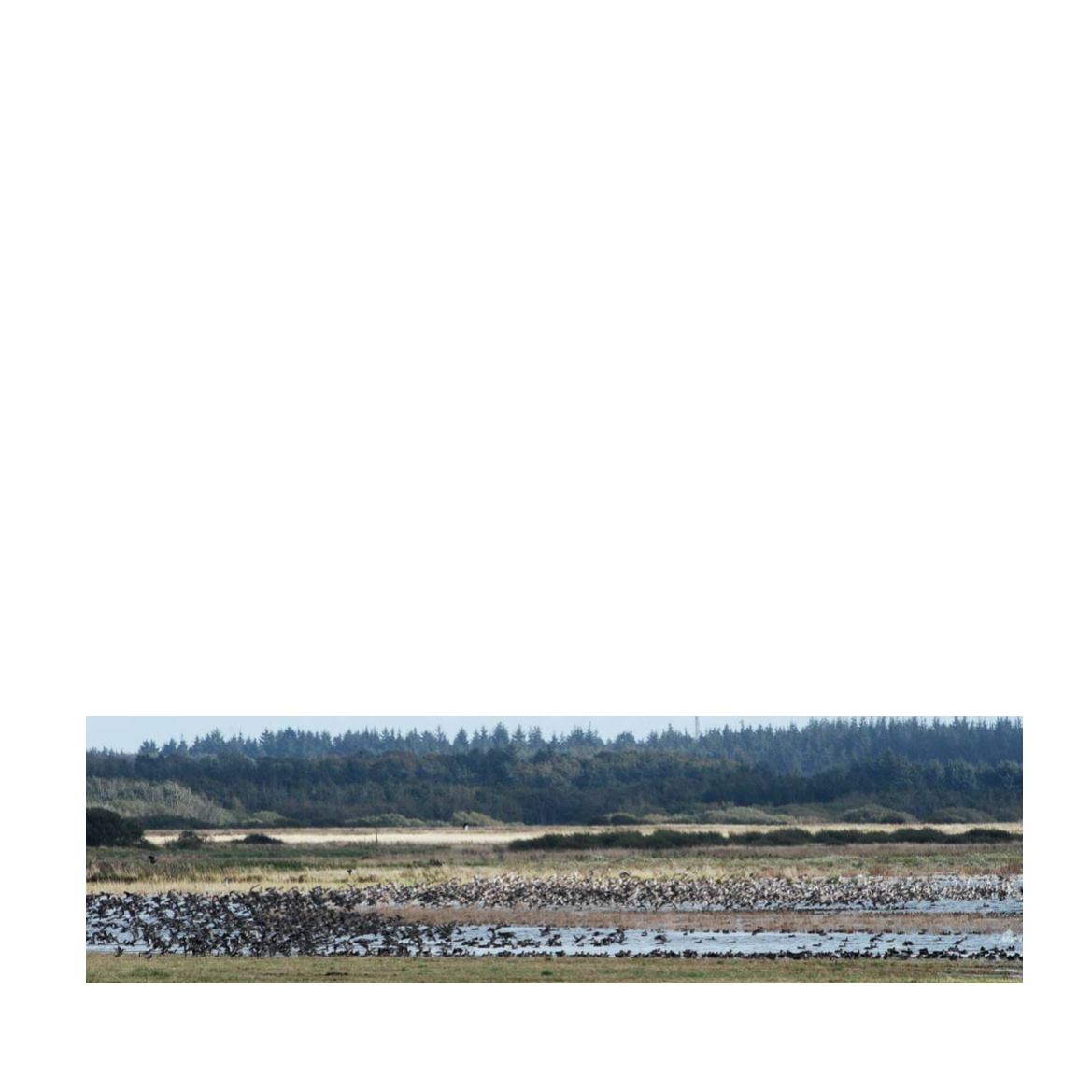
tled the water mill, and the water level plunged to 2.2 metres
above sea level, and the lake’s area subsequently decreased
to about 750 hectares.
Until about 1920 the reclaimed area was mainly used for
haymaking and grazing. The combination of a lake, water
meadows, fens and reed beds provided unique habitats for
many species of migrating waterbirds including whooper
swans, Bewick’s swan, the pink-footed goose, ducks and
waders. It was also considered an excellent area for wild-
fowling. Among breeding birds, ruffs, black-tailed godwits,
dunlins, lapwings and bitterns were common according to
the narratives of the naturalists of the time.
In 1940, a new law on land reclamation was passed by
parliament, and private landowners could apply for up to
75% of the expenditure on a land reclamation project in or-
der to increase the amount of arable land. The company A/S
Fiil-Sø wanted to drain the existing lake and applied under
the law on state subsidies. In the period 1940 to 1951, how-
ever, with a major setback during the German occupation of
Denmark in the Second World War, the remaining 750 hec-
tares of the lake were transformed into productive farmland.
Before the war, environmental NGOs became aware of
the natural assets of Filsø, including its stunning birdlife,
and demanded a conservation scheme in order to save the
remaining natural habitats from further deterioration. How-
ever, they failed to come to an agreement with A/S Fiil-Sø,
but in 1958 a mitigation scheme was established by legal
protection of the northern lake area, Lake Fidde, including
adjacent meadows and the heathland between the western
shore of Filsø and the North Sea.
In 2011, when the Aage V. Jensen Nature Foundation
took over the farmland and other parts of the Filsø Estate,
COWI, a consultant firm, had produced plans for a nature
restoration project. This went through an environmental
impact assessment and finally, after a consultation period,
it was approved by the local municipality. The project sub-
sequently went ahead, and on 7 October 2012 the Nature
Foundation officially declared the project completed. A pub-
lic gathering was attended by about 3,000 interested people.
The project includes the restoration of a lake of about 915
hectares and the adjacent wet meadows. In the lake itself,
nearly 20 artificial islets were created by material from de-
molished dykes, and they may, in addition to meadows and
reed beds, serve as breeding sites for waterbirds which com-
monly bred there before the reclamation. The lake itself may
provide resting and feeding opportunities for a wide range
of migrants (geese, swans, ducks and shore birds). Seen in a
wider perspective, the new lake will without doubt improve
the biodiversity of a large area in this part of West Jutland.
In addition, Filsø could be a new and internationally impor-
tant ecological ‘stepping-stone’ on the flyway along the west
coast of Denmark from the Limfjord to the Wadden Sea.
Søndersø i september 2012. De nye vandflader blev hurtigt fundet af flere tusinde krikænder. Foto: Palle Uhd Jepsen.
119


